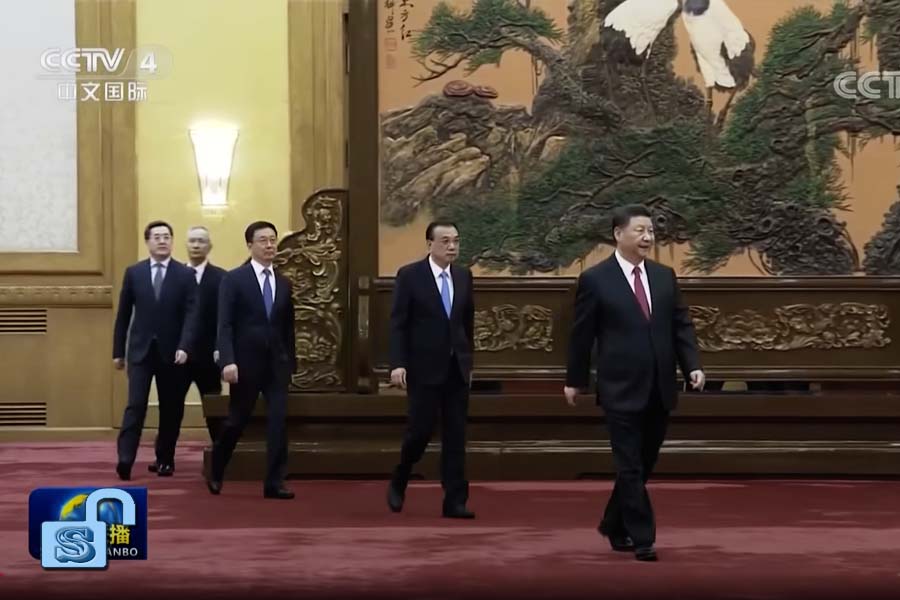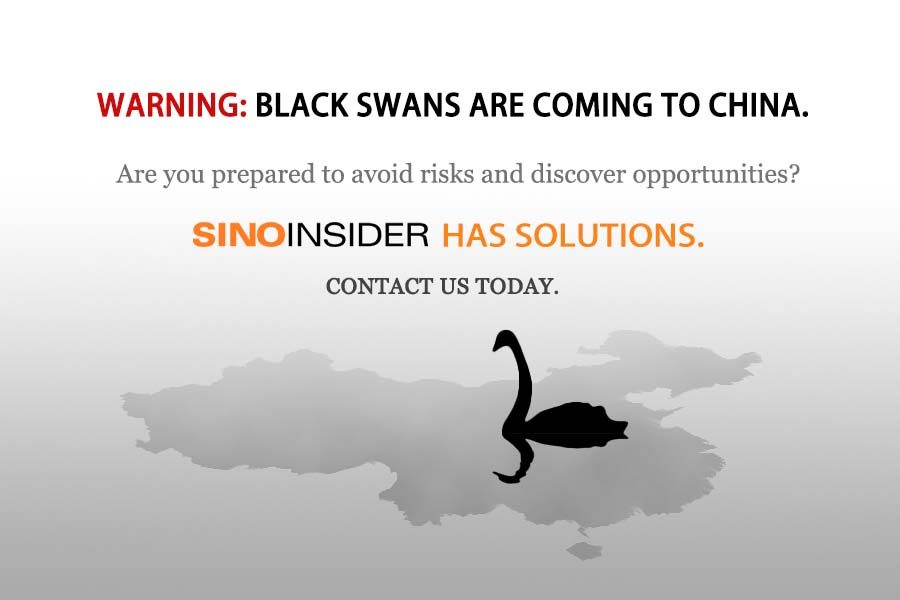◎ Speculation of a “Xi-Li split” has to be taken with a huge grain of salt in light of political realities and protocol in the CCP regime.
Around late May this year, speculation of a split between Xi Jinping and Li Keqiang started making the rounds in China watching circles. Observers noted that Li’s promotion of the so-called “street stall economy” faced pushback in some areas, particularly in Beijing. They also argued that Li’s comments about 600 million people in China living on a monthly income of 1,000 yuan ran counter to Xi’s promotion of a “moderately prosperous society” and his drive to eliminate poverty by 2020.
Talk of a “Xi-Li split” gathered steam as observers “found” more and more instances of Li’s “marginalization.” In July, Xi chaired a symposium with business leaders; observers say Li was “left out” even though economics was part of his portfolio as premier of the People’s Republic of China, and suggested that Xi was pushing Li aside. During a ceremony on July 31, attendees clapped for Xi when he was introduced by PRC vice premier Liu He, but stopped when Li was introduced; observers say Xi “clearly” meant to “humiliate” Li. Between Aug. 18 and Aug. 20, Xi Jinping and Li Keqiang both inspected flood rescue work in the provinces, but state media did not report on Li’s inspections as prominently as Xi’s; observers say that the difference in media treatment is further evidence of a split between the two, while Hong Kong media speculated that “forces inside the Party,” of which a “representative figure” (代表人物) is Li Keqiang, had sought to “oust Xi” during this year’s Beidaihe meeting.
The perception of a split between Xi Jinping and Li Keqiang is widespread given the prevalence of two narratives on elite Chinese politics. The first narrative holds that Xi is Mao-like, “unrivaled” Party boss; this narrative has gone mainstream since the Chinese Communist Party scrapped term limits for the PRC presidency and vice presidency in March 2018. The second and more recent narrative holds that many in the CCP are opposed to Xi, with the implication that resistance against the Xi leadership is rising. Both narratives, however, oversimplify the complexities of CCP elite politics and factional struggle in the regime. The result is a misrepresentation of the current dynamic between the PRC president and premier, and a broader misreading of political instability in the CCP regime.
Our take
1. Speculation of a “Xi-Li split” has to be taken with a huge grain of salt due to political realities in the CCP regime.
We previously explained why it is very unlikely that Li Keqiang will challenge Xi Jinping. To briefly reiterate, Li would find it nearly impossible to lead or rally support for an “anti-Xi coalition” even if he wanted to due to his “commoner” background. Unlike Party princeling Xi, Li is not part of the “red aristocracy,” and as Orwell wisely observed in his allegory about communist regimes, “some animals are more equal than others.” Also, Xi and Li are political allies against the Jiang Zemin faction, and both still have incentive to stick together because the Jiang faction, while considerably weakened, is still a serious political force. Further, as a seasoned Party official, Li is well aware that siding with Xi’s rivals to oust his long-term ally would expose himself to immense personal risk, given the treacherous and unforgiving nature of CCP elite politics.
To be sure, Xi Jinping and Li Keqiang have their disagreements over policy. It is also possible that Xi could be becoming increasingly paranoid and distrustful of his allies as the daily pressures of strongman rule take its toll on his psyche. However, publicly available information at this juncture does not point to a fraying of their political alliance.
Because a “Xi-Li split” benefits Xi’s factional rivals, we have reason to believe that they are behind some of the speculation concerning this “split,” as they strive to drive a wedge between the two to gain an edge in the factional struggle. The persistent rumors of a “Xi-Li split” are indeed a sign of fierce political infighting in the CCP elite—just not the infighting that many are presuming.
2. The various bits of “evidence” that supposedly indicate a “Xi-Li split” are either misreadings resulting from the two prevalent narratives on CCP elite politics that we mentioned above, or affirm our analysis of CCP elite politics since the 19th Party Congress in 2017.
We explained why Xi and Li appeared to “differ” over the “street stall economy” in June when speculation was rife about their “infighting.” To rehash, Li’s remarks are almost certainly part of a central government initiative to fight poverty and rescue the economy, but was “challenged” by local governments who needed to fine-tune the central initiative to suit local circumstances. For instance, it is unsurprising that Beijing and first-tier cities “criticized” the “street stall economy” because it would affect business operations and the image (sanitary concerns, noise pollution, etc.) of upscale districts. However, those less familiar with longstanding central-local policy implementation difficulties in China and focused on finding elite opposition to Xi will be more inclined to (mis)read local government pushback against Li Keqiang as a “Xi-Li split.”
Viewing the “lack” of applause for Li Keqiang when being introduced by Liu He at a ceremony as a sign of Xi Jinping’s “displeasure” is also misreading the situation. From Liu’s reading of the introduction, it seems that he planned to pause after reading Xi’s name, but not for the other members of the Politburo Standing Committee who were present. Indeed, those present at the ceremony appeared clapping in reaction to Li standing, not because his name was read. The fact that everyone quickly stopped clapping when Liu He read on suggested that Li was being absent-minded and had simply forgotten protocol (the “General Secretary Plus” arrangement; see the following paragraph), while the others were genuinely unsure how to respond to Li getting up. Had Xi planned to “humiliate” Li as some have suggested, there would be no clapping at all when he got up.
Finally, Li Keqiang’s “absence” from some economy-related events (meeting with business executives) and the “lack” of media coverage over some of his activities (flood inspection work) are not at all unusual with the change in political rules of the game in the CCP regime after the 19th Party Congress and the 2018 Two Sessions. Due to the implementation of a “General Secretary Plus” arrangement and marginalization of the “collective leadership” model, as well as Xi’s continuous efforts to boost his “quan wei” as a bulwark against challenges from factional rivals, Party and state media cannot present Xi as being merely “first among equals” in the Politburo Standing Committee. It is also only natural in a “General Secretary Plus” arrangement for Xi to handle some of the important economic work that would previously be Li Keqiang’s purview to make Xi more prominent; making Xi stand out is not the same as “humiliating” Li. Thus, Li appears to have taken a step back from some of his economic duties, while mainland propaganda outlets have noticeably given Xi increased and prominent coverage (more headline articles in Xinhua, more media mentions as compared to others, etc.) over the other Politburo Standing Committee members to emphasize his authority over them. Meanwhile, Li Keqiang and the others in the Politburo Standing Committee are still featured in Xinhua’s “important news” column, but are never given headline articles. That being said, there have been no signs since the 19th Party Congress of mainland media providing less coverage of Li as compared to other Politburo Standing Committee members (with the natural exception of Xi). Of course, the “reduced” coverage of Li in propaganda outlets, particularly on the recent flood rescue inspections that both Xi and Li conducted, will seem to those looking for “evidence” of a “Xi-Li split” as further confirmation of bad blood brewing between the two.
3. CCP propaganda outlets very briefly covered Xi Jinping’s flood rescue inspections between Aug. 18 to Aug. 20, and did not cover the floods very much on the whole. Meanwhile, Li’s flood inspections were not reported in mainland media but were featured in the news section of the PRC State Council website instead. As we laid out above, the discrepancy in coverage is less a sign of hostilities between Xi and Li than a reflection of the “General Secretary Plus” arrangement of the 19th Party Congress. However, the general lack of coverage of senior CCP leaders inspecting flood rescue work and the floods themselves reveal that Beijing does not wish to draw too much attention to the crisis and what it is doing to tackle it.
Beijing does not want to highlight its flood rescue work or the flooding because it is likely not putting significant resources into it. In a State Council meeting on Aug. 26, Li Keqiang said that 100 billion yuan will be allocated from central and local government budgets for post-disaster recovery and reconstruction. However, 100 billion yuan is only 56 percent of the 178.96 billion yuan in estimated total flood losses as reported by PRC Ministry of Water Resources vice minister Ye Jianchun on Aug. 13. Meanwhile, the State Council announced on Aug. 13 that it has assigned a total of 79,000 military troops, militia forces, and emergency personnel to the 27 flood-hit provinces, or an average of less than 3,000 rescue personnel per province. Still, having 79,000 personnel doing disaster work between July and August will cost the CCP at least 500 million yuan (assuming the cost of deploying one rescue worker is 100 yuan per day, and not counting the cost of deploying material, vehicles, and other logistics).
From the CCP’s own data and its relatively scant coverage of the flooding disaster in China, we can infer that it is likely unable to devote resources to the relief effort, and hence does not want to call attention to it. The fact that the CCP cannot put more resources into the relief effort also indicates that the Chinese economy is in very bad shape (CCP data shows that China’s fiscal deficit grew 52 percent between January to July from a year ago to 1.9 trillion yuan). Mounting domestic problems will lead to political problems for Xi Jinping, and political Black Swans are just over the horizon when intra-Party factional struggle reaches a boiling point.













